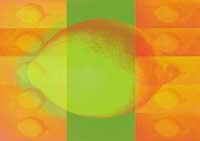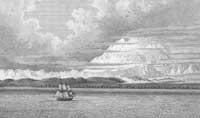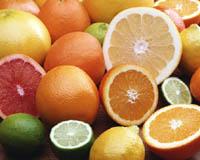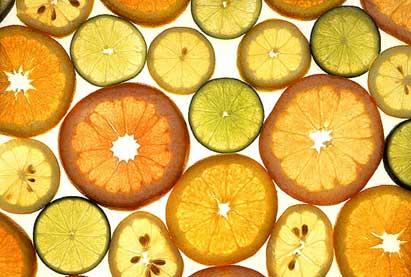Seeking the treasure of health
2001/04/08 Galarraga Aiestaran, Ana - Elhuyar Zientzia

XVIII. The marine men of the twentieth century faced a series of dangers: terrible storms, attacks of sea thieves, malevolent marine currents that did not appear on the maps of the time or forced interventions in unexpectedly declared wars. But the diseases that were produced by the scarcity of food and the lack of toilet were more terrifying than all of them. And among those who caused more deaths was the scurvy.
A sailor of the time explains the symptoms of the disease: "I felt a great weakness, I was unprotected, all the lost teeth and the upper and lower teeth came out like gelatin, and I had so much blood flow that I had the mouth hung outside the hammock so that the blood that was forced to sleep would pour into the ground, and I had to be far from clothes and lids so that they would not get dirty."
Although the above description is very representative, they are not the only damages caused by the scurvy. In the words of then-James Lind's doctor, "the first symptoms are headache, loss of appetite, weakness, mental agility, irritability and tendency to disobedience," and after referring to increasingly serious symptoms, he dramatically ended the description of the characteristics of the disease: "To finish, vulnerability advances to death."

This doctor, who gave so much detail when he entered the British navy in 1739, soon learned that the scurvy, typhus and dysentery caused more deaths than the French and Spanish shipping companies, since two-thirds of the crew were dying. With the aim of finding a solution, it was the first scientific essay of history that collected the remedies that were then considered as the remedies of the scurvy and which he carried out with the companions of his boat.
He chose twelve patients from HSM Salisbury, with the same symptoms: corrupt dentons, skin spots and weakness. The fact that the members of the essay team are in the same situation is very important from a scientific point of view and have been collected in writing in their book A Treatise of the Scurvy (Treatise on the Scurvy). In addition, all were in the same place and had the same diet: "Fresh water pan of sugar in the morning; often the fresh lamb broth to eat, other times pudddings, cookie cooked with sugar, etc. ; for dinner, beer, raisins, rice and currants, flour and wine, or similar.”

The twelve chosen men divided into six pairs and gave each couple a different drug. In this distribution not all had the same fate, the first couple had to take half a liter of cider a day and the second, fasting and three times a day, had to make gars with 25 drops of vitriol (sulfuric acid). Apparently they were willing to do everything to cure the scurvy, but I think if they did, they would also prefer to drink cider.
The treatment adapted to the third pair was lighter, even three times a day and only two tablespoons of vinegar should take their medicine on an empty stomach. However, according to Lind, the most unhappy were those who had to drink water from the sea every day half paint (somewhat more than a quarter liter). It is clear that, for tastes, everyone has his own, so the next one had to take into account, drag by drinking water from the sea...
And the fifth couple had to adopt a special mix in a hospital, which included garlic, mustard seeds, tamarind and tartartaric cremor (and our child will say that the cough syrup has bad flavor! ).

Finally, the sixth couple had the most beneficial treatment, since it forced him to eat two oranges and a lemon a day. As Lind left written, both ate with good taste, both fasting and full belly. The treatment lasted six days, during which time they were left without orange or lemon in the boat.
However, the results of the experiment were very significant: although cider benefited to a certain extent, those who ate citrus received the most outstanding improvement and so collected it in their book. Even though some signs of illness appeared until the sixth day, when on June 16 they arrived in Plymouth, one of the couple's members was saturated with health.
Linde did not know what vitamin C was and, even less, how and why the lack of vitamin caused this disease. But their logic and method were a small revolution in medicine at the time, and then scientists have taken those steps in their research. However, for many years did not take into account the work of Linden and the general order to carry citrus fruits on all British ships did not occur until one year after his death. Since then, the British sailors were known as "limey".
Published in 7K

Gai honi buruzko eduki gehiago
Elhuyarrek garatutako teknologia






